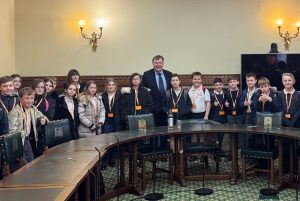I have been contacted by a large number of constituents about the change in lockdown arrangements after 2 December. Many are understandably concerned about what the new tier system will mean for their business or if they will now be able to visit a loved one at a care home, whilst some remain sceptical about the need for any restrictions at all. I do of course understand the frustration that constituents will have and endeavour to answer all the concerns raised with me about the recent changes.
It is not the case that these arrangements have been put in to protect people who would have died anyway. Many people who become ill with Covid recover but are hospitalised, removing the bed for use for other ailments and accidents, and suffer long term consequences of the disease which are only just starting to be understood. 189 countries globally are directly addressing coronavirus through public education and restrictions on movement. In Europe, France, German, Italy, Spain, Greece, Portugal, Belgium, the Netherlands, Czech Republic, Denmark and Ireland are all in some state of lockdown or restrictions at present – some more strict than our own. When compared globally, the UK’s response has been roughly average when assessed against the restrictions imposed in other countries, and our economic support packages have been amongst the more generous. You can read more about this here: https://ourworldindata.org/policy-responses-covid
I am at heart a libertarian and am greatly saddened at the need to curtail people’s freedoms. I am, however, persuaded that all the measures put in place to respond to this outbreak, are proportionate to the threat we face. It is important that they are only be used when strictly necessary, and will only be in place for as long as required to respond to the situation. I welcome measures in place to review this act on a six monthly basis to ensure that the measures remain appropriate. It is clear that the virus will be with us for some time, and it is vital that we are able to take necessary steps to save lives.
It is thanks to hard work of people across the country that we are able to move out of national lockdown, however COVID-19 has not yet been defeated, and as such I believe that targeted local restrictions will help to minimise those risks. Here in Maldon, cases rose from 9 per 100,000 to 85 per 100,000 over 8 weeks. If we had not taken measures to restrict movement there can be no doubt that these figures would be much worse and, regretfully, it remains the case that restrictions are necessary to prevent any acceleration of the infection rate.
If we start from rules strong enough to keep driving down transmission of the virus, we can relax later. In contrast, going in the other direction will test the patience of voters. Nor do we want to grind along with infection rates stable but not falling. We want infections coming down decisively, so we can loosen up. With the vaccine now on the way, people dying unnecessarily in the final months of the pandemic would be tragic.
It is vital that we act on the latest data available to ensure that the most appropriate actions are taken at the most appropriate time. I know my colleagues throughout the Government agree with this principle, and are working with researchers, scientific advisers, and data teams to ensure that they have access to information as quickly as possible. I also welcome that the Government is continuing to make data publicly available.
I understand that lockdowns and other restrictions have caused enormous stress and disruption to people’s lives. I also understand that lockdowns do cause other side effects and we must be mindful of these when considering policy options. I know that Ministers agree and are working hard to consider all possibilities before putting forward comprehensive measures where necessary.
Case rates are a useful metric for scientists as an indication of when it might be appropriate for an area to move to a level ‘High’ alert; however, there are other useful factors to consider, including how quickly cases are rising or falling, pressure on the NHS and projected capacity, local context, positivity in the general population, and exceptional circumstances such as a local but contained outbreak. If these indicators are not improving, an area may be moved up a tier and if the trajectory improves, the area may move to a lower tier.
I welcome that new rapid turnaround tests, which can help to identify and isolate people who do not have symptoms but are unintentionally spreading the virus, can also be used to identify people who do not have the virus. This means that, in due course, it should be possible to offer people who test negative the prospect of greater freedoms.
We have three vaccines that have been proven effective, with one approved and underway. The NHS is gearing up to ensure the vaccine can be distributed quickly and effectively with the most at risk at the top of the list. Mass testing capacity has been achieved, enabling us the chance to return to closer to normal even before the vaccines are fully rolled out. You can see the data for Essex here: https://www.essex.gov.uk/local-outbreak-control-plan?utm_medium=email&utm_campaign=coronavirus%20update%2027%20November%202020&utm_source=govdelivery&utm_content=data&utm_term=
All local MPs want to be able to make the case to our colleagues in Government that Essex should be moved down to Tier 1. You can help us do that by continuing to follow the rules to suppress this virus.



